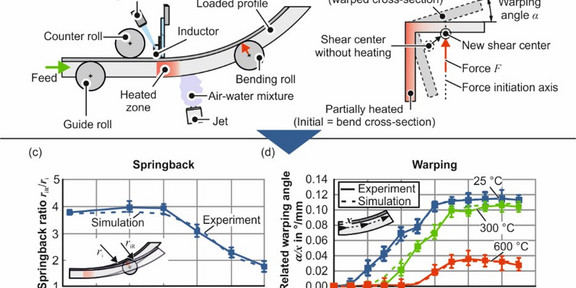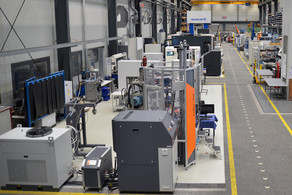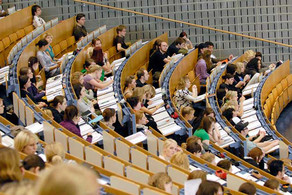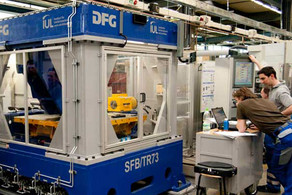Kinematic Profile Bending with Locally Heated Cross Section
- Massivumformung
- Umformtechnische Grundlagenforschung
- Technologieentwicklung

| Funding | German Research Foundation (DFG) |
| Project | 408302329 |
| Contact | Eike Hoffmann M. Sc. |
In this project the suitability of partial heating of asymmetric profiles for the reduction of geometrical deviations in bending is examined. In conventional bending of profiles with asymmetric cross section regarding the force initiation axis, the difference of shear center position and position of the force initiation axis leads to warping. To avoid warping, the profiles are partially heated through induction (see Figure a). Consequently, the position of the shear center changes due to thermal softening in the heated area. Through the change of position in direction of the force initiation axis the length of the torsional lever arm and, as a result, the torsion moment are reduced (see Figure b). For the geometrical result the heating temperature and the selection of the heated area is relevant. Currently, the behavior during bending of L-profiles with partial heating temperatures of up to 600 °C is investigated. In the comparison with conventionally bent profiles a springback reduction of up to 56% (see Figure c) as well as a warping reduction of up to 76% has been achieved (see Figure d).







![[Translate to English:] [Translate to English:]](/storages/iul-mb/_processed_/0/f/csm_Forschung1_2880x640_patrick_7b98a9cf47.png)